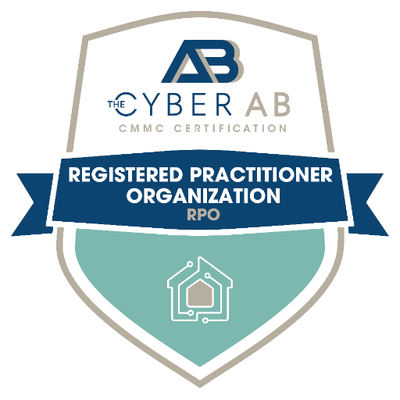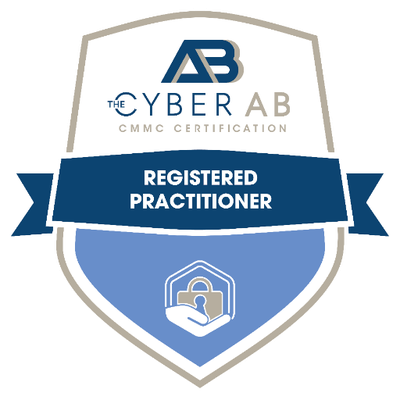As the CFO steering the financial strategies for contracts, staying informed about the evolving landscape of cybersecurity regulations is pivotal. The Department of Defense (DoD) is implementing significant updates to the proposed rule for the Cybersecurity Maturity Model Certification (CMMC, CMMC 2.0 is the latest), signaling a critical shift in the requirements for future government engagements.
What often goes unnoticed is the significant disparity in confidence levels within organizational teams. The tech team’s readiness confidence hovers around 30%. Those held accountable for regulatory fines and potential contract loss, including the CFO and CEO, express a significantly higher confidence level at 87%. This striking contrast underscores the magnitude of the situation, especially when considering the average $3.4 million personal liability is at stake. This is akin to playing a risky game with EBITA, risking complete organizational failure, and envisioning drastic cost-cutting measures.
This isn’t merely about compliance; it’s a strategic imperative for the organization’s financial stability and success. The proposed changes in the CMMC framework call for a holistic approach, where financial leaders bridge the confidence gap within their teams and proactively address risks associated with non-compliance and potential personal financial liabilities. It’s not just about adapting to a procedural shift; it’s about fortifying financial resilience amid heightened regulatory scrutiny.
Consider the legal ramifications faced by Penn State University in 2023 under the False Claims Act (FCA) as a stark reminder of the high stakes involved in non-compliance and false attestations. The prospect of falsified documents, misleading attestations, and mishandling sensitive information not only exposes organizations to legal risks and financial penalties but also threatens their reputation and long-term success.
Understanding these risks goes beyond monetary concerns; it’s about safeguarding financial resilience and ensuring continued success in government contracting. Whether it is 1% or 100% of your business doing DoD work, 100% of your business needs to be evolving due to the evolving nature of this risk.
How Will This Impact Your Organization?
CMMC 2.0 ensures that defense Primary contractors, Secondary subcontractors, and organizations meet stringent information protection requirements. With the October 2025 deadline for compliance approaching, understanding and preparing for these proposed changes is not just beneficial; it’s imperative for continued information security, operational success, and new revenue contracting opportunities.
CFOs understand that these risks aren’t just monetary; they extend to the fabric of an organization’s reputation and long-term success in government contracting. Proactively comprehending and addressing these challenges isn’t just about compliance; it’s about safeguarding financial resilience, protecting reputation, and ensuring continued success in the competitive government contracting arena. It underscores the critical need for accurate, honest, well-documented, and demonstrable representations to the Government – a strategic imperative for financial stability and enduring success.
- The Update. In December 2023, the DoD entered a 60-day comment period for a proposed rule related to the Cybersecurity Maturity Model Certification (CMMC). The implications of these changes are profound and expansive. Understanding the intricacies and proactively preparing for these proposed alterations is paramount for maintaining a competitive edge and ensuring compliance in an environment that is becoming increasingly regulated. Proactively comprehending and preparing for the impending CMMC 2.0 requirements is crucial for your business’s long-term success and security in government contracting.
- Cost Implications. There’s potential for reduced program costs through provisions like self-assessments and streamlined assessments for specific levels, that impact your budgeting and planning.
The key thing to note is that building cybersecurity maturity takes time–typically 18 months. Cultural change takes time. Organizations will need to require practice. Excuses will not be accepted in the case of a data breach or mishandling of the information you have taken responsibility for as an organization.
Who Does the CMMC Ruling Affect?
Threat actors are compounding, and daily reports of cyberattacks underscore the need for proactive measures. Even seemingly simple Controlled Unclassified Information (CUI) can have far-reaching repercussions. The key is to start preparing now, recognizing that threat actors are ahead of the game, and proactive measures are the best defense.
This development significantly influences Federal Contracting, particularly for organizations involved with NASA SEWP, GSA, DoD, and other government entities. The proposed rule introduces streamlined requirements and levels of compliance tailored to the sensitivity of the information handled and the nature of the threats faced. Surprisingly, this affects a lot more organizations than you would expect.
What Are Your Best Next Steps?
- Be Prepared: Grasping the proposed changes allows for a more strategic approach to becoming compliant by any deadline, particularly the proposed 2025 deadline. The changes provide a more precise roadmap for achieving compliance, allowing for a more strategic and informed approach to meeting CMMC 2.0 requirements.
- Resource Allocation: Financial statements are the CFO’s scorecards. Managing risk for financial health needs a digestible scorecard and continual management of the “proof” necessary to get and stay compliant with all new regulatory arms. Successful organizations have moved away from spreadsheets and old file management, opting for governance, risk, and management tools.
- ROI is Key: CFOs need a GRC Platform managed and administered by RPOs preparing for C3PAO audits. Omnistruct, with its Governance as a Service (GaaS) approach, sees risk and passing audits as financial health, ensuring audit readiness at the necessary time.
Omnistruct, as a Governance as a Service (GaaS) organization, offers a comprehensive solution managed and administered by RPOs, ensuring continual compliance and governance at a fraction of the cost of an in-house team. This is not a one-time effort but continual compliance and governance at a fraction of the cost of a full-time equivalent in-house team. Every organization is unique, our offerings are tailored to meet the needs of all investment budgets.
Cybersecurity Definitions
It almost seems like you need to learn a new language when talking about protecting your organization from cyberattacks. Want to know what a Wi-Fi Pineapple is or need to learn more about the threats you and your business face? We have you covered. Learn all about hacking, phishing, malware, spyware, ransomware, scareware, and more.





